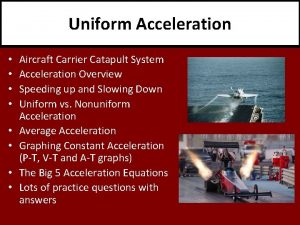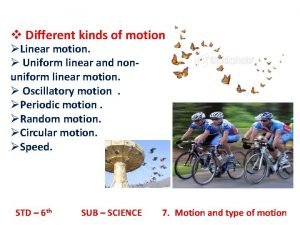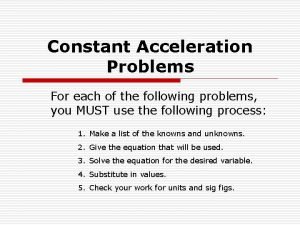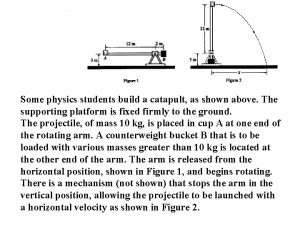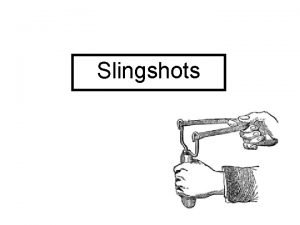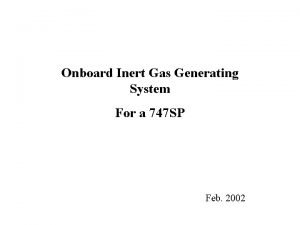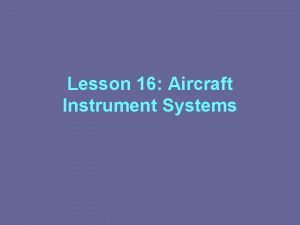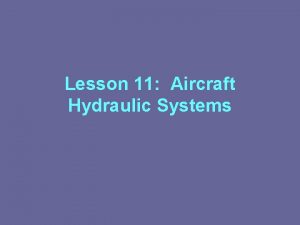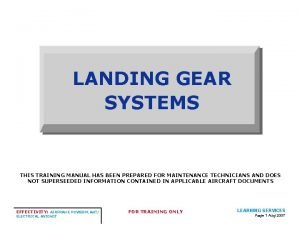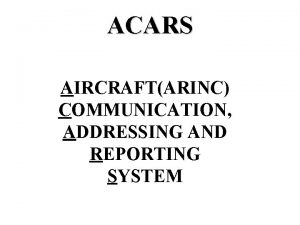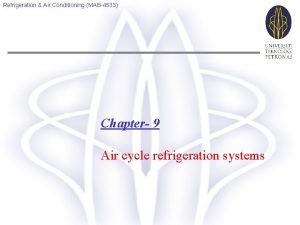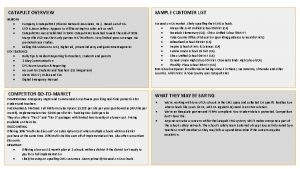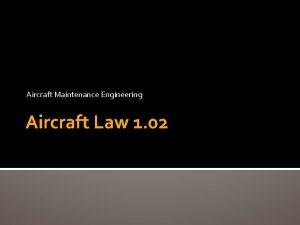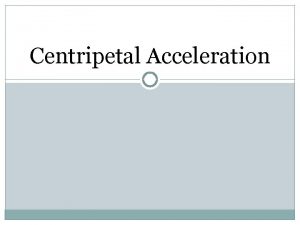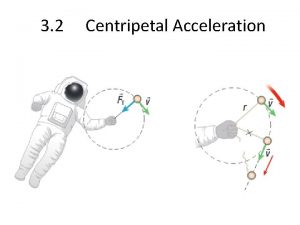Uniform Acceleration Aircraft Carrier Catapult System Acceleration Overview









![Check Your Understanding • A cyclist, travelling initially at 14 m/s [S], brakes smoothly Check Your Understanding • A cyclist, travelling initially at 14 m/s [S], brakes smoothly](https://slidetodoc.com/presentation_image_h2/7c92e27093c25438872d8a1187cde0ce/image-10.jpg)



![Check Your Understanding • A motorcyclist travelling at 23 m/s [N] applies the brakes, Check Your Understanding • A motorcyclist travelling at 23 m/s [N] applies the brakes,](https://slidetodoc.com/presentation_image_h2/7c92e27093c25438872d8a1187cde0ce/image-14.jpg)













![Check Your Understanding • A motorcyclist, travelling initially at 12 m/s [W], changes gears Check Your Understanding • A motorcyclist, travelling initially at 12 m/s [W], changes gears](https://slidetodoc.com/presentation_image_h2/7c92e27093c25438872d8a1187cde0ce/image-28.jpg)
![Check Your Understanding • A motorcyclist, travelling initially at 12 m/s [W], changes gears Check Your Understanding • A motorcyclist, travelling initially at 12 m/s [W], changes gears](https://slidetodoc.com/presentation_image_h2/7c92e27093c25438872d8a1187cde0ce/image-29.jpg)
![Check Your Understanding • A motorcyclist, travelling initially at 12 m/s [W], changes gears Check Your Understanding • A motorcyclist, travelling initially at 12 m/s [W], changes gears](https://slidetodoc.com/presentation_image_h2/7c92e27093c25438872d8a1187cde0ce/image-30.jpg)


- Slides: 32

Uniform Acceleration • • Aircraft Carrier Catapult System Acceleration Overview Speeding up and Slowing Down Uniform vs. Nonuniform Acceleration Average Acceleration Graphing Constant Acceleration (P-T, V-T and A-T graphs) The Big 5 Acceleration Equations Lots of practice questions with answers

Steam Power Catapult System on Aircraft Carriers • Aircraft carrier jets display some of the greatest accelerations you will see. Take-off: 0 km/h to 265 km/h in only 2. 0 s Landing: 240 km/h in 100 m

Acceleration • _____ • Velocity is a vector quantity therefore, acceleration is also a vector quantity • Average acceleration, aav, is the change in velocity divided by the time interval for that change: • where vf is the final velocity, vi is the initial velocity, and Δt is the time interval. • Instantaneous acceleration is the acceleration any particular instant —but often just referred to as acceleration

Acceleration Units • What units do you end up with for acceleration? = m/s 2 s • _____

Speeding up or Slowing Down • Since acceleration is the change in velocity, you can have acceleration as an object speeds up (positive acceleration) AND when it slows down (negative acceleration) • Both display a change in velocity • What do you think the slope of the VT graph tells you?

Uniform vs. Nonuniform Acceleration • Uniform acceleration is motion that ______ • Nonuniform acceleration is motion that doesn’t travel in a straight line and/or doesn’t change it speed uniformly.

Check Your Understanding • Using your knowledge of acceleration and the terms we’ve discussed (uniform motion, uniform acceleration, and increasing or decreasing velocity) describe the motion.

Average Acceleration • Since the change of velocity of a moving object is the final velocity (vf) minus the initial velocity (vi), the equation for acceleration can be written

Check Your Understanding • A motorbike starting from rest and undergoing uniform acceleration reaches a velocity of 21. 0 m/s [N] in 8. 4 s. Find its average acceleration.
![Check Your Understanding A cyclist travelling initially at 14 ms S brakes smoothly Check Your Understanding • A cyclist, travelling initially at 14 m/s [S], brakes smoothly](https://slidetodoc.com/presentation_image_h2/7c92e27093c25438872d8a1187cde0ce/image-10.jpg)
Check Your Understanding • A cyclist, travelling initially at 14 m/s [S], brakes smoothly and stops in 4. 0 s. What is the cyclist’s average acceleration?

Check Your Understanding • Rearrange the acceleration equation below to solve for t.

Check Your Understanding • Rearrange the acceleration equation below to solve for vf

Check Your Understanding • Rearrange the acceleration equation below to solve for vi
![Check Your Understanding A motorcyclist travelling at 23 ms N applies the brakes Check Your Understanding • A motorcyclist travelling at 23 m/s [N] applies the brakes,](https://slidetodoc.com/presentation_image_h2/7c92e27093c25438872d8a1187cde0ce/image-14.jpg)
Check Your Understanding • A motorcyclist travelling at 23 m/s [N] applies the brakes, producing an average acceleration of 7. 2 m/s 2 [S]. What is the motorcyclist’s velocity after 2. 5 s?

Check Your Understanding 1. 2. 3. 4. 5. 6. Is it possible to have acceleration when the velocity is zero? If “no, ” explain. Is it possible to have an eastward velocity with a westward acceleration? If “no, ” explain why not. If “yes, ” give an example. A flock of robins is migrating southward. Describe the flock’s motion at instants when its acceleration is (a) positive, (b) negative, and (c) zero. Take the southward direction as positive. A track runner, starting from rest, reaches a velocity of 9. 3 m/s [fwd] in 3. 9 s. Determine the runner’s average acceleration. The Renault Espace is a production car that can go from rest to 26. 7 m/s with an incredibly large average acceleration of magnitude 9. 52 m/s 2. (a) How long does the Espace take to achieve its speed of 26. 7 m/s? (b) What is this speed in kilometres per hour? An arrow strikes a target in an archery tournament. The arrow undergoes an average acceleration of 1. 37 x 103 m/s 2 [W] in 3. 12 x 10 -2 s then stops. Determine the velocity of the arrow when it hits the target.

Nonuniform Acceleration • For nonuniform accelerated motion, the velocity-time graph for the motion is not a straight line and the slope changes. In this case, _____

Graphing Motion with Constant Acceleration • A speedboat accelerates uniformly from rest for 8. 0 s, with a displacement of 128 m [E] over that time interval. See the position-time graph below • ____

• The velocity–time graph is on the right. It shows the instantaneous velocities as determined by the slopes of the tangents ______

• The acceleration can be determined from the slope of the line on the velocity-time which is • _____

P-T, V-T and A-T Graphs

What the graphs tell us • The area under the line on a velocity-time graph indicates the change in position over the time interval • The area under the line on an accelerationtime graph _____

Check Your Understanding • This is the acceleration-time graph of a car accelerating through its first three gears. Assume that the initial velocity is zero. Use the information in the graph to determine the final velocity in each gear. Draw the corresponding velocity-time graph.

Check Your Understanding - Solutions • The area under each segment of the a-t plot is the CHANGE in velocity during the time interval A 1 = a 1Δt 1 = A 2 = a 2Δt 2 = A 3 = a 3Δt 3 =

Check Your Understanding - Solutions • The area under each segment of the a-t plot is the CHANGE in velocity during the time interval ΔA =

Check Your Understanding This chart summarizes observations of a crawling baby experiencing constant acceleration over several successive 2. 0 s intervals. a) Draw a velocity-time graph for this motion. b) Use the information on your velocity-time graph to draw the corresponding acceleration-time graph. Time (s) 0 2 4 6 8 10 Velocity 10 15 20 15 10 5

The Big 5 Acceleration Equations • Use these equations to solve motion problems involving acceleration, displacement, time and velocity.

Solving Equations • Whenever you are faced with a word problem the first thing you need to do is determine what is given and what is unknown including all units. • The second thing is assign your vertical and horizontal positive directions as well as define directions. Choose the positive direction which will make answering the question easiest. +
![Check Your Understanding A motorcyclist travelling initially at 12 ms W changes gears Check Your Understanding • A motorcyclist, travelling initially at 12 m/s [W], changes gears](https://slidetodoc.com/presentation_image_h2/7c92e27093c25438872d8a1187cde0ce/image-28.jpg)
Check Your Understanding • A motorcyclist, travelling initially at 12 m/s [W], changes gears and speeds up for 3. 5 s with a constant acceleration of 5. 1 m/s 2 [W]. What is the motorcyclist’s displacement over this time interval? 1) Determine your Given(s) and Unknown(s) and assign your positive directions. +
![Check Your Understanding A motorcyclist travelling initially at 12 ms W changes gears Check Your Understanding • A motorcyclist, travelling initially at 12 m/s [W], changes gears](https://slidetodoc.com/presentation_image_h2/7c92e27093c25438872d8a1187cde0ce/image-29.jpg)
Check Your Understanding • A motorcyclist, travelling initially at 12 m/s [W], changes gears and speeds up for 3. 5 s with a constant acceleration of 5. 1 m/s 2 [W]. What is the motorcyclist’s displacement over this time interval? 2) Choose the equation you will need based on the variables you have as well as what you require.
![Check Your Understanding A motorcyclist travelling initially at 12 ms W changes gears Check Your Understanding • A motorcyclist, travelling initially at 12 m/s [W], changes gears](https://slidetodoc.com/presentation_image_h2/7c92e27093c25438872d8a1187cde0ce/image-30.jpg)
Check Your Understanding • A motorcyclist, travelling initially at 12 m/s [W], changes gears and speeds up for 3. 5 s with a constant acceleration of 5. 1 m/s 2 [W]. What is the motorcyclist’s displacement over this time interval? + 3) Solve and write your concluding statement

Check Your Understanding • Starting from rest at t = 0. 0 s, a car accelerates uniformly at 4. 1 m/s 2 [S]. What is the car’s displacement from its initial position at 5. 0 s? +

Check Your Understanding • An Olympic diver falls from rest from the high platform. Assume that the fall is the same as the official height of the platform above water, 10. 0 m. At what velocity does the diver strike the water? +
 Big 5 equations
Big 5 equations How do you classify uniform and non-uniform mixtures?
How do you classify uniform and non-uniform mixtures? Granola homogeneous or heterogeneous
Granola homogeneous or heterogeneous Contoh aliran seragam dan tidak seragam
Contoh aliran seragam dan tidak seragam Type of motion
Type of motion Uniformly accelerated motion formulas
Uniformly accelerated motion formulas Uniform acceleration problems
Uniform acceleration problems Centripetal acceleration is
Centripetal acceleration is Linear acceleration and angular acceleration
Linear acceleration and angular acceleration Radial acceleration definition
Radial acceleration definition Angular acceleration and linear acceleration
Angular acceleration and linear acceleration Tangential acceleration and centripetal acceleration
Tangential acceleration and centripetal acceleration Trebuchet pros and cons
Trebuchet pros and cons How to build a catapult for physics project
How to build a catapult for physics project Catapult
Catapult Fulcrum catapult
Fulcrum catapult Catapult projectile motion
Catapult projectile motion Mangonel catapult design
Mangonel catapult design Hawaiian slingshot
Hawaiian slingshot Tennis ball catapult plans
Tennis ball catapult plans Two parents have each built a toy catapult
Two parents have each built a toy catapult Shanghai catapult
Shanghai catapult Drawing of catapult
Drawing of catapult Rose hulman catapult
Rose hulman catapult A catapult is tested by roman legionnaires
A catapult is tested by roman legionnaires Onboard inert gas generation system
Onboard inert gas generation system Aircraft instrument system
Aircraft instrument system Aircraft hydraulic system
Aircraft hydraulic system Aircraft electrical components
Aircraft electrical components Aircraft landing gear system
Aircraft landing gear system Aircraft communications addressing and reporting system
Aircraft communications addressing and reporting system Ae6402
Ae6402 Basic refrigeration and air conditioning
Basic refrigeration and air conditioning
